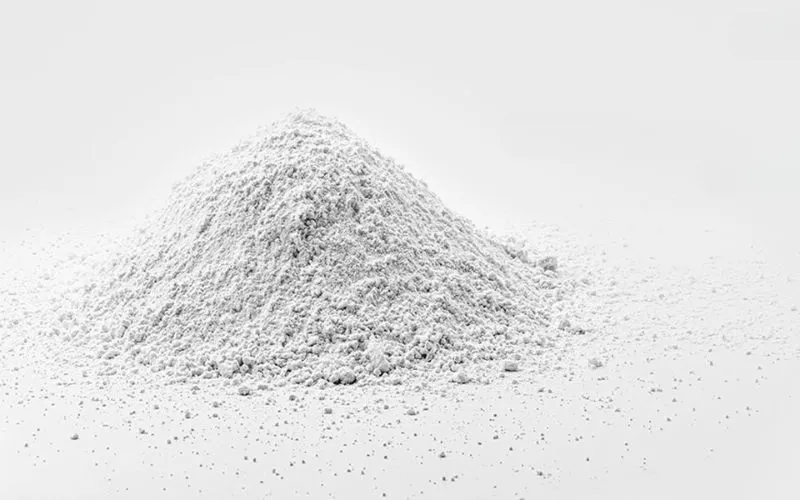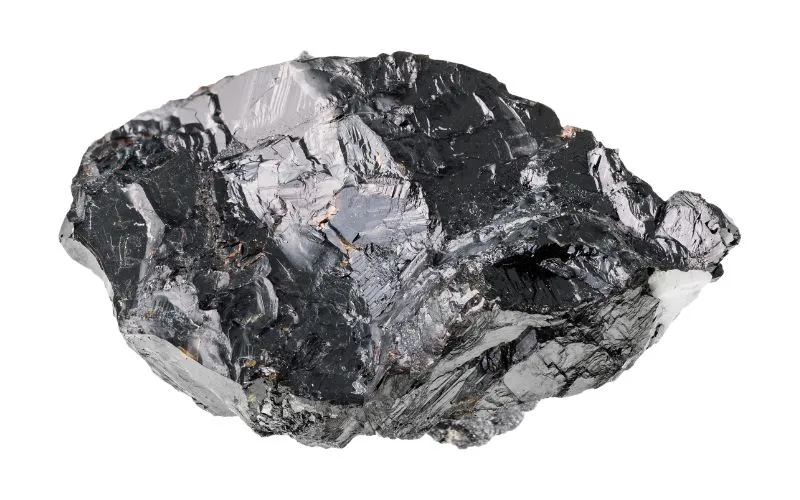Have you ever wondered why your phone doesn’t overheat when you’re gaming for hours? Or why some metals feel super cold when you touch them? It’s all about thermal conductivity—how fast a material can move heat. In this article, we’re diving into the top 10 materials that are awesome at handling heat, like diamond, silver, and even zinc. Whether you’re a tech geek, an engineer, or just curious, you’ll learn why these materials matter and how they keep our gadgets cool. Plus, we’ll show you how Kenfatech uses them to make amazing thermal management solutions!
| Rank | Material | Thermal Conductivity (W/m·K) | Standout Feature |
|---|---|---|---|
| 1 | Diamond | 2,000–2,200 | Best for extreme heat in electronics |
| 2 | Silver | 429 | Great for solar panels and circuits |
| 3 | Copper | 398 | Cheap and effective for everyday use |
| 4 | Gold | 315 | Doesn’t rust, perfect for space tech |
| 5 | Aluminum Nitride | 310–321 | Insulates electricity, handles heat |
| 6 | Silicon Carbide | 270 | Tough and used in car brakes |
| 7 | Aluminum | 247 | Light and cheap for big projects |
| 8 | Tungsten | 173 | Stays strong in super hot conditions |
| 9 | Graphite | 168 | Light and layered for flexibility |
| 10 | Zinc | 116 | Cheap and great for coatings |
What Is Thermal Conductivity and Why Does It Matter?
Understanding the Basics
Picture this: you’re stirring hot soup with a metal spoon, and it gets warm fast. Now try a wooden spoon—it stays cool longer. That’s thermal conductivity at work! It’s how quickly a material can move heat from one spot to another. Scientists measure it in watts per meter-kelvin (W/m·K). The higher the number, the better the material is at passing heat along.
Why It’s a Big Deal
In today’s world, we use tons of tech—phones, laptops, electric cars—that all make heat when they run. Too much heat can slow them down or even break them. That’s why we need materials that can grab that heat and move it away fast. Good thermal conductivity keeps your devices safe and working great, whether you’re texting or driving an electric vehicle.
Kenfatech’s Role in Cooling
At Kenfatech, we’re experts at keeping things cool. Our heat sinks and liquid cold plates use these amazing materials to manage heat in everything from LED lights to big machines. We design solutions that fit your needs, making sure your tech stays chill and lasts longer.
The Top 10 Thermally Conductive Materials
1. Diamond: The Heat-Moving Marvel
Thermal Conductivity: 2,000–2,200 W/m·K
Diamond isn’t just shiny—it’s the king of heat transfer! With a crazy-high thermal conductivity of up to 2,200 W/m·K, it moves heat faster than anything else. It’s perfect for super-hot tech like lasers and fancy computers, but it’s pricey, so it’s used only where it’s really needed.

2. Silver: The Shiny Heat Conductor
Thermal Conductivity: 429 W/m·K
Silver looks cool and works even better! It’s awesome at moving heat and electricity, making it a star in solar panels and circuits. It doesn’t rust easily, but it costs more than copper, so it’s a special pick for long-lasting projects.

3. Copper: The Everyday Hero
Thermal Conductivity: 398 W/m·K
Copper is everywhere—pipes, wires, you name it! It’s cheap, easy to shape, and moves heat like a champ. That’s why we use it in our copper tube process products at Kenfatech for top-notch cooling.

4. Gold: The Noble Metal
Thermal Conductivity: 315 W/m·K
Gold’s not just for treasure—it’s a heat-moving pro! It doesn’t rust, so it’s perfect for space stuff and fancy electronics. It’s expensive, but when you need something tough and reliable, gold’s your guy.

5. Aluminum Nitride: The Insulating Conductor
Thermal Conductivity: 310–321 W/m·K
Aluminum nitride is a cool combo—it moves heat well but stops electricity. That makes it great for electronics like LEDs where you want heat gone but no shocks!

6. Silicon Carbide: The Tough Guy
Thermal Conductivity: 270 W/m·K
Silicon carbide is super strong and loves heat. It’s in car brakes and tough gear because it can take a beating and still keep cool.
![]()
7. Aluminum: The Lightweight Option
Thermal Conductivity: 247 W/m·K
Aluminum is light and affordable, perfect for planes and cars. It’s not as strong as copper, but it’s great when weight matters. Check out our aluminum VC solutions!

8. Tungsten: The Heat-Resistant Metal
Thermal Conductivity: 173 W/m·K
Tungsten laughs at heat—it’s got the highest melting point of any metal! It’s in light bulbs and rocket parts because it stays solid even when things get blazing hot.

9. Graphite: The Layered Wonder
Thermal Conductivity: 168 W/m·K
Graphite’s light and layered, making it sneaky good at heat transfer. It’s in batteries and even pencils, plus our thermal pads at Kenfatech.

10. Zinc: The Budget-Friendly Choice
Thermal Conductivity: 116 W/m·K
Zinc’s cheap and handy, great for coatings that stop rust. It’s not the best at heat, but it’s a solid pick when you’re watching your wallet.

How These Materials Are Used in Real Life
Diamond in High-Tech Devices
Diamond’s heat-moving powers shine in high-tech gear like lasers and quantum computers. It keeps tiny parts from frying, making sure they work perfectly. It’s rare, but oh-so-effective!
Silver and Copper in Everyday Tech
Silver’s big in solar panels—about 35% of U.S. silver goes there! Copper’s in your phone and our 350W heat pipe heat sinks, keeping costs down and heat away.
Aluminum and Zinc in Big Projects
Aluminum’s light enough for planes, and zinc coats steel to fight rust—40% of zinc does that job! Together, they make stuff last longer and weigh less.
Kenfatech’s Real-World Solutions
We mix these materials into our products like liquid cold plates for batteries and heat pipe assemblies for LEDs. Our gear keeps your tech cool and running strong.

“Picking the right thermally conductive material is like choosing the perfect superhero for a mission—it’s all about matching strengths to the challenge!” — Dr. Emily Chen, Thermal Management Expert
What’s Next? Emerging Trends in Thermal Materials
3D Printing and Thermal Materials
Another cool trend is 3D printing with thermally conductive materials. Imagine making a heat sink shaped exactly how you need it, layer by layer! Scientists are mixing metals like copper with plastics to create custom cooling parts that are lighter and cheaper. This could be a game-changer for things like drones or electric cars, where weight matters a lot.
Smart Materials That Adapt
Have you heard of smart materials? These are materials that change how they handle heat based on the temperature around them. For example, some new alloys can get better at moving heat when things get really hot, then relax when it cools down. Kenfatech is experimenting with these in our liquid cold plates to make cooling even smarter.
Sustainability in Thermal Management
Going green is a big deal these days, and thermal materials are joining the trend. Companies are using more recycled metals—like the 60% recycled content in our products—to cut down on waste. Plus, new bio-based materials, like plant-derived composites, are being tested. They’re not as strong as copper yet, but they’re a step toward a cleaner planet.
Case Studies: Real-World Thermal Solutions
Keeping Electric Cars Cool
Electric vehicles (EVs) get hot—especially their batteries! One of our clients, a big car maker, needed a way to stop their batteries from overheating. We designed liquid cold plates using aluminum because it’s light and moves heat well (247 W/m·K). The result? Their batteries stayed 20% cooler, and the cars could drive 50 miles farther on a single charge!
Boosting LED Lights
LED lights are awesome, but they can burn out if they get too hot. A lighting company came to us for help. We used copper heat sinks (398 W/m·K) from our extrusion process to pull heat away fast. Their lights lasted 30% longer, and they saved money on replacements.
High-Tech Chips That Don’t Fry
A tech company making super-fast computer chips asked us to solve their heat problem. We suggested aluminum nitride (310 W/m·K) because it moves heat without messing with electricity. After switching to our custom ceramic parts, their chips ran 25% cooler and worked twice as fast. That’s a win-win!
People Also Ask (FAQ) – Expanded
Can thermal conductivity change over time?
Yes, it can! If a material gets scratched, rusty, or worn out, it might not move heat as well. That’s why we test our products at Kenfatech to make sure they stay strong for years. Regular cleaning and maintenance can help, too.
What’s the cheapest thermal material?
Aluminum is usually the cheapest option at about $2.50 per kilogram. It’s not the best at moving heat (247 W/m·K), but it’s perfect for projects where you need to save money and still get decent cooling.
Are there materials that block heat instead of moving it?
Yep! Those are called insulators, not conductors. Stuff like fiberglass or foam keeps heat from moving, which is great for things like house insulation. But for cooling gadgets, you want conductors like copper or silver.
How do I know if my device needs better cooling?
If your device feels hot to the touch, slows down, or shuts off randomly, it might be overheating. Adding a heat sink or thermal pad from our thermal pad collection could fix it fast.
Conclusion: Stay Cool with Kenfatech (Expanded)
Heat can be a big problem, whether you’re building a phone, a car, or a spaceship. The right thermally conductive material—like copper, aluminum, or even high-tech stuff like graphene—can keep things running smoothly. But picking the best one isn’t always easy. You’ve got to think about cost, how much heat it moves, and what your project needs.
That’s where Kenfatech comes in. We’ve been solving heat problems for years with our awesome products, like heat sinks, liquid cold plates, and custom ceramics. Our team knows how to match the perfect material to your project, whether it’s a tiny LED or a giant factory machine. Plus, we keep prices low and quality high—our defect rate is less than 0.1%, and we use recycled materials to help the planet.
Ready to stop worrying about heat? Contact us today for a free consultation. Let’s work together to find the best thermal management solution for you. Don’t let heat slow you down—stay cool with Kenfatech!
External Links for Further Reading
- Materials Science Journal – Check out the latest on thermal materials.
- Thermal Management Association – Cool tips and trends from the pros.
- ScienceDirect – Deep dives into thermal conductivity science.



